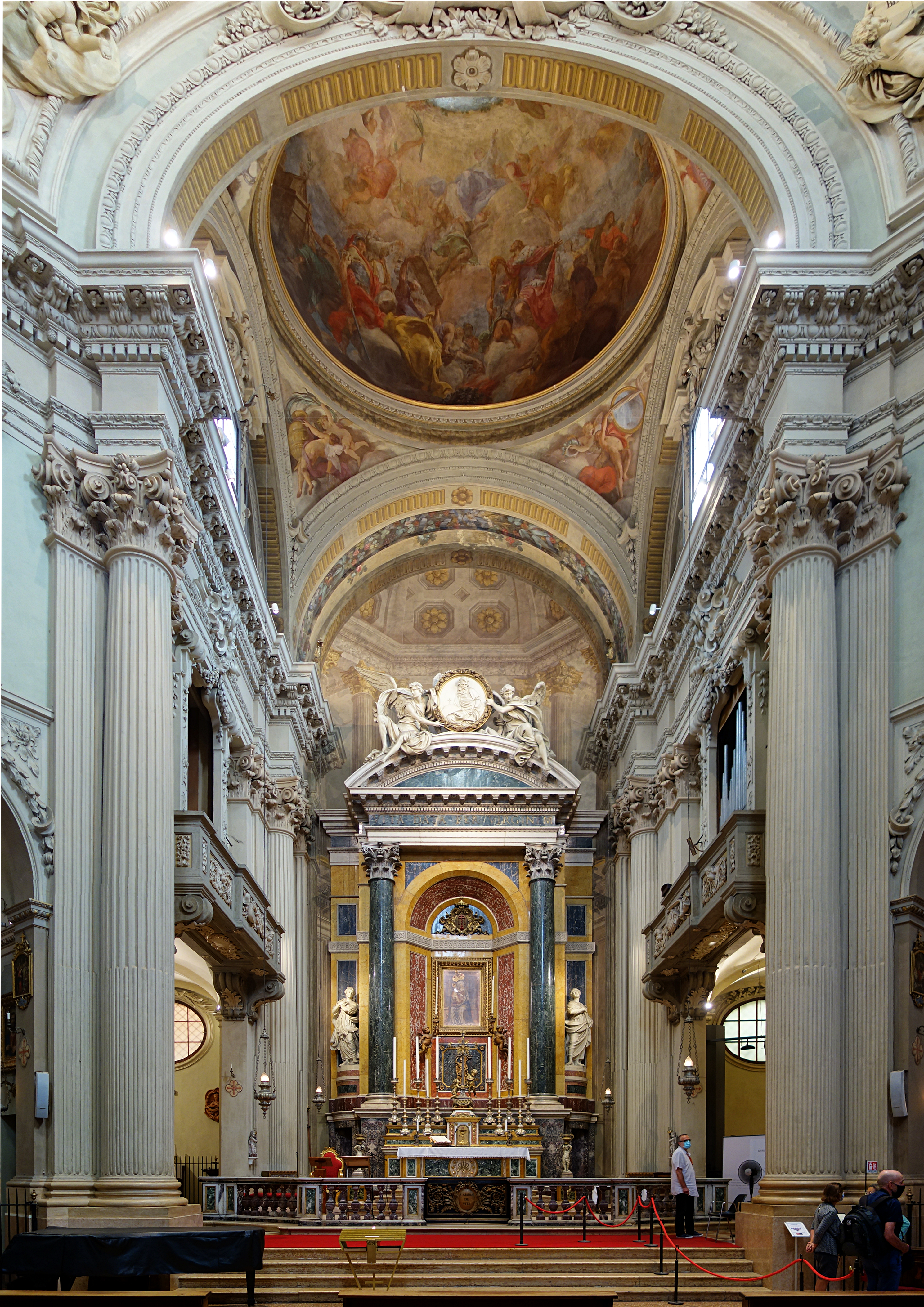Santa Maria Della Vita on:
[Wikipedia]
[Google]
[Amazon]
 The Sanctuary of Santa Maria della Vita is a late-
The Sanctuary of Santa Maria della Vita is a late-
Bologna Welcome
entry on oratory.
 The Sanctuary of Santa Maria della Vita is a late-
The Sanctuary of Santa Maria della Vita is a late-Baroque
The Baroque ( , , ) is a Western Style (visual arts), style of Baroque architecture, architecture, Baroque music, music, Baroque dance, dance, Baroque painting, painting, Baroque sculpture, sculpture, poetry, and other arts that flourished from ...
-style, Roman Catholic
The Catholic Church (), also known as the Roman Catholic Church, is the largest Christian church, with 1.27 to 1.41 billion baptized Catholics worldwide as of 2025. It is among the world's oldest and largest international institut ...
church in central Bologna
Bologna ( , , ; ; ) is the capital and largest city of the Emilia-Romagna region in northern Italy. It is the List of cities in Italy, seventh most populous city in Italy, with about 400,000 inhabitants and 150 different nationalities. Its M ...
, near the Piazza Maggiore
Piazza Maggiore (''Piâza Mażåur'' in the Bolognese dialect, Bolognese language) is a central square in Bologna, region of Emilia-Romagna, Italy, largely preserving its 15th century layout. The Northwest corner opens into Piazza del Nettuno wit ...
.
History
The construction of the present Baroque church began in 1687-1690 under the designs of Giovanni Battista Bergonzoni, who built the elliptical plan with adome
A dome () is an architectural element similar to the hollow upper half of a sphere. There is significant overlap with the term cupola, which may also refer to a dome or a structure on top of a dome. The precise definition of a dome has been a m ...
designed by Giuseppe Tubertini, completed in 1787. The facade was not added till 1905. The sanctuary houses the sculptural group of ''Sorrow over Dead Christ'' (1463) by Niccolò dell'Arca
Niccolò dell’Arca (c. 1435-1440 – 2 March 1494) was an Italian Early Renaissance sculptor, who worked mostly in terracotta. He is also known under the names Niccolò da Ragusa, Niccolò da Bari, Niccolò dall'Arca, and Niccolò d'Ant ...
.
Oratorio dei Battuti
In the adjacent oratory, built between 1604 and 1617 to designs byFloriano Ambrosini
Floriano Ambrosini (1557–1621) was an Italian architect and engineer, active in late-Renaissance or Mannerist style, mainly in his native Bologna.
He helped design the Palazzo Magnani and the chapel of St Dominic, containing the Arca di San D ...
, is a ''Madonna with child and Saints'' (1550) by Nosadella and a ''Transit of the Madonna'' (bodily assumption), a group of 14 statues in terracotta (1522) by Alfonso Lombardi
Alfonso Lombardi ( – 1537), also known as Lombardi da Lucca, Alfonso da Ferrara and as Alfonso Lombardo, was an Italian sculptor and medallist who was born in Ferrara, Italy, in 1497, and died in Bologna in 1537. He was very active in Bologna ...
. On the niches of the walls are statues of ''St Proculus'' and ''St Petronius'' by the famed sculptor Alessandro Algardi
Alessandro Algardi (July 31, 1598 – June 10, 1654) was an Italian high-Baroque sculptor active almost exclusively in Rome. In the latter decades of his life, he was, along with Francesco Borromini and Pietro da Cortona, one of the major rivals ...
, as well as by Giulio Cesare Conventi (''St Francis'' and ''St Domenic''). In 1275, the local Confraternita dei Battuti Bianchi, a confraternity of flagellants
Flagellants are practitioners of a form of mortification of the flesh by whipping their skin with various instruments of penance. Many Christian confraternities of penitents have flagellants, who beat themselves, both in the privacy of their dw ...
was organized and supported a hospital at the site.entry on oratory.
References
Roman Catholic churches in Bologna Baroque church buildings in Bologna 1687 establishments in Italy 17th-century Roman Catholic church buildings in Italy Roman Catholic churches completed in 1787 {{EmiliaRomagna-RC-church-stub